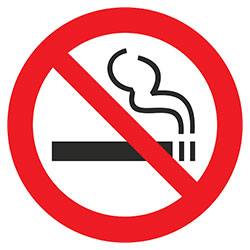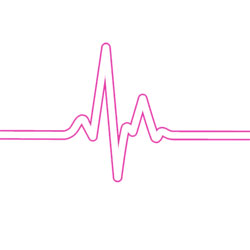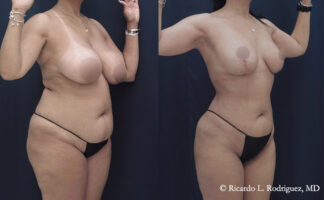What is a Breast reduction?
Dr. Ricardo Rodriguez is a board-certified plastic surgeon in Baltimore, Maryland, who has performed over 1,000 breast procedures throughout his career. He specializes in breast reduction using the vertical scar technique to create natural, lifted results with less scarring. Recognized as a “Patients Top Choice” for Plastic Surgery by U.S. News & World Report, Dr. Rodriguez is known for his patient-first philosophy and artistic precision.
Breast reduction, or Reduction mammaplasty, is a plastic surgery procedure that removes excess skin and fatty tissue, lifting the breasts and making them smaller. Because it’s often used to relieve pain associated with having large breasts, it is considered reconstructive surgery and is frequently covered by medical insurance.
Baltimore plastic surgeons perform the procedure with a variety of techniques. Each technique will result in a different location of the scar. Scars will typically be either an inverted T scar or a vertical scar. Patients should discuss the technique with their surgeon before the surgery!
What problems does a Breast reduction address?
My breasts are so large that I have back pain.
Use AI tools to summarize this page:
Breast reduction surgery can alleviate symptoms caused by large breasts, including:
- Back pain
- Neck pain
- Shoulder pain
- Breast pain
- Emotional or self-image issues
Who Benefits Most from a Breast Reduction?
If your breasts sag but you're happy with their size when wearing a bra, a breast lift might be a better option. However, if you feel like your breasts are too large or uneven, cause back or neck pain, or if you struggle to find clothing that fits comfortably or experience discomfort when playing sports, then you're an ideal candidate for breast reduction.
How is a Breast Reduction performed?
Dr. Rodriguez prefers to perform the procedure under monitored IV anesthesia instead of general anesthesia because it eliminates much of the nausea during recovery. During the procedure, excess skin and breast tissue are removed, and the nipple is repositioned to match the new breast size.
The vertical scar technique is the preferred method, as it leaves less scarring than the 'inverted T' or Weiss pattern. This technique avoids horizontal scars, which tend to broaden or thicken, leaving a flatter, less attractive shape.
Instead, Dr. Rodriguez uses a vertical scar or lollipop incision, a technique he's been performing since 1989 after learning it from Dr. Claude Lassus in France, who developed the vertical scar technique procedure in 1964.
I am so HAPPY with my results and my body's transformation! From my 1st consultation and meeting the staff throughout pre and post op surgery the experience was beyond what I expected.
RealSelf patient (34DDD to 32B/C)
What is the Vertical Breast Reduction Technique?
The vertical breast reduction technique focuses on minimizing scarring, with no horizontal scars at all. Learn more about why the single vertical scar technique is superior to the traditional Weiss breast reduction technique in this article about breast reduction scars.
What are the preoperative requirements?

Pre-op requirements include:
- Getting medical clearance within 30 days of surgery, which requires a history and physical (H&P) and a CBC blood test.
- Reading the informed consent document and preparing questions.
- Scheduling a pre-op appointment with Dr. Rodriguez to review the surgical plan, get prescriptions, and sign the informed consent forms.
- Stopping smoking at least two weeks before the surgery.
- Avoiding aspirin, Motrin, or herbal products two weeks prior.
- Not eating or drinking anything after midnight on the night before surgery.
What is Post-Op Recovery Like?
After your breast reduction surgery, you'll need to take one to two weeks off from work. During recovery:
- Rest and drink plenty of fluids for the first two days.
- Drains will be removed 2-3 days post-op.
- Avoid driving for the first week after surgery.
- Most patients can resume exercise after four weeks, but specific instructions will be given post-surgery.
What are the risks and possible complications?

- Infection
- Fluid accumulation
- Scarring
- Skin discolorations
- Bruising and swelling
- Asymmetry
How Much Does a Breast Reduction Cost?
The estimated total cost for breast reduction surgery in 2025 at our Quad A-accredited outpatient surgery center is $8,900.
This includes the surgeon's fee, operating room fee, and anesthesia fee for a four-hour procedure. Our facility only uses board-certified anesthesiologists for anesthesia.
Does insurance cover a Breast Reduction?
In most cases, insurance will reimburse part of the procedure if at least 500cc of tissue is removed from each breast. While Dr. Rodriguez does not participate with insurance directly, he will submit the claim so that your insurance company can reimburse you.
I had my breast reduction with Dr. Rodriguez and I’m extremely happy with the results. My pain was minimal, and Dr. Rodriguez made me feel confident moving forward with the procedure. I only wish I’d done it sooner. No back pain anymore!!!
RealSelf patient
Can I finance my Breast Reduction?
Yes, financing options are available to help manage the cost of your breast reduction. Call us at 410-494-8100 or see our financing page for more information.
Dr. Rodriguez: Trusted Breast Reduction Surgeon in Baltimore
Dr. Ricardo Rodriguez brings over 25 years of surgical experience to each breast reduction procedure, with a focus on safety, symmetry, and long-term relief from the physical discomfort caused by overly large breasts. He is one of the few surgeons in the U.S. to have trained directly in the vertical scar technique and has performed more than 1,000 breast procedures using this method.
Each surgery is performed in our Quad A-accredited surgical facility in Baltimore under IV sedation with a board-certified anesthesiologist—helping to minimize post-op nausea and enhance your recovery. Patients receive direct access to Dr. Rodriguez’s personal cell phone after surgery, and benefit from a hands-on, compassionate approach that honors both physical and emotional goals.
Ready to explore what's possible?
BOOK A COURTESY CONSULT TODAY!
Dr. Rodriguez speaks English, Spanish, and French to ensure every patient feels understood and supported. We look forward to helping you look and feel your best,

Board Certified Plastic Surgery, ASPS Member
NOTICE
Patients depicted in our before and after galleries have provided their written consent to display their photos online. Every patient is unique, and surgical results may vary. Please contact us if you have any questions.

